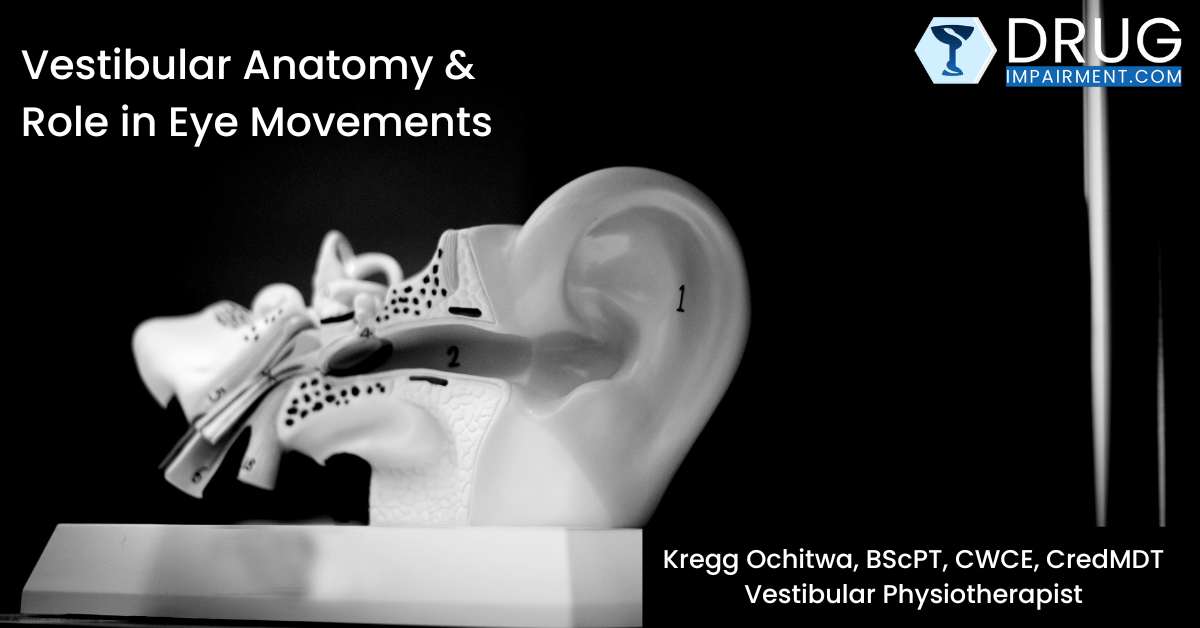This course is an introduction to the role of prescription medication in driving impairment. Topics include general categories of prescription medications that commonly contribute to impaired driving, associated symptomatology, and an introduction to drug-drug interactions, inter individual variability, and tolerance. The target audience for this group is members of the forensic / criminal justice system without previous advanced training on drug-impaired driving, such as Drug Recognition Experts or experienced forensic toxicologists.
Vestibular Anatomy & Role in Eye Movements
Course Description:
The vestibular system is a complex apparatus principally responsible for balance and detection of body position. Input from the vestibular system informs neurological responses that control corrective movements of the body and eyes to maintain desired position. Dysfunction of the vestibular system can result in poor balance and involuntary eye movements, similar to symptoms expected of drug intoxication.
This course will introduce anatomy of the vestibular system, explain basic function of its major elements, and explore the role of the vestibular system in eye movements. The instructor will provide several demonstrative videos and guided interpretation to assist in understanding the general origin of different types of spontaneous eye movements.
This course will introduce anatomy of the vestibular system, explain basic function of its major elements, and explore the role of the vestibular system in eye movements. The instructor will provide several demonstrative videos and guided interpretation to assist in understanding the general origin of different types of spontaneous eye movements.
Recommended Learners:
LEO
DRE
Toxicologist
DRE
Toxicologist

- July 28, 2023
- Duration: 0.5 hr.
- Lessons: 2
- Quizzes: 0
- Certificate: Yes

Kregg Ochitwa
Kregg has been a registered physical therapist since 1995. Over the years his caseload has shifted from solely orthopedic to a mix of orthopedic and vestibular. With this background he has also established a reputation for treating concussion, having treated athletes in the NFL, CFL, college ranks, WHL, high school athletes, and the weekend warrior. See full bio.